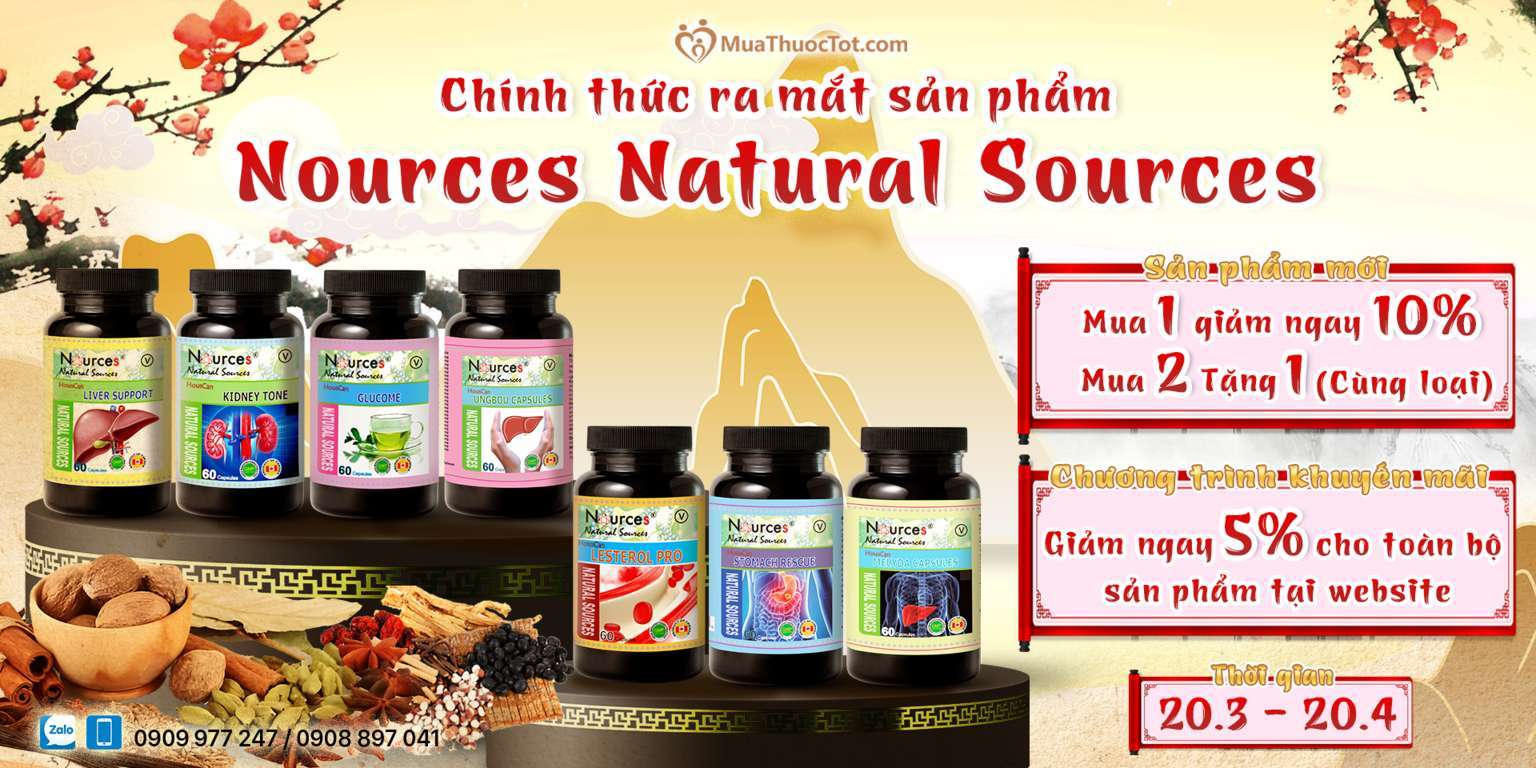-
 Thanh toán đa dạng, linh hoạtChuyển khoản ngân hàng, thanh toán tại nhà...
Thanh toán đa dạng, linh hoạtChuyển khoản ngân hàng, thanh toán tại nhà... -
 Miễn Phí vận chuyển 53 tỉnh thànhMiễn phí vận chuyển đối với đơn hàng trên 1 triệu
Miễn Phí vận chuyển 53 tỉnh thànhMiễn phí vận chuyển đối với đơn hàng trên 1 triệu -
 Yên Tâm mua sắmHoàn tiền trong vòng 7 ngày...
Yên Tâm mua sắmHoàn tiền trong vòng 7 ngày...
The Nature Cure: A Doctor's Guide to the Science of Natural Medicine
-

- Mã sản phẩm: 0525561277
- (55 nhận xét)

- Publisher:Viking; Translation edition (August 6, 2019)
- Language:English
- Hardcover:352 pages
- ISBN-10:0525561277
- ISBN-13:978-0525561279
- Item Weight:1.25 pounds
- Dimensions:6.2 x 1.17 x 9.3 inches
- Best Sellers Rank:#875,710 in Books (See Top 100 in Books) #500 in Naturopathy Medicine #837 in Holistic Medicine (Books) #47,938 in Medical Books (Books)
- Customer Reviews:4.2 out of 5 stars 56Reviews

Mô tả sản phẩm
Product Description
“Informative . . . I recommend it to practitioners and patients alike.” —Andrew Weil, MD, author of Eight Weeks to Optimum Health and Mind Over Meds
International bestselling author Dr. Andreas Michalsen uncovers the natural cures that will transform your health and change your life
Sunlight. Forest bathing. Fasting. Cold-water baths. Bloodletting. Leeches. Cupping. These ways of healing have been practiced in different cultures around the world for centuries. But as a cardiologist working with the most high-tech medical tools, Dr. Andreas Michalsen was taught that these practices were medieval and outdated, even dangerous. As he saw surprising results in his patients, however, Dr. Michalsen explored more deeply those seemingly "outdated" methods of healing. The more he researched, the more he was convinced by the power of natural medicine--naturopathy--to heal the human body.
Over the past few decades, Dr. Michalsen has published the most cutting-edge scientific research on the efficacy of natural medicine. At the prestigious Charité University Hospital in Berlin, Dr. Michalsen has successfully treated thousands of patients using elements found in nature--sunlight, water, nourishing foods, medicinal plants and animals. The culmination of years of research and clinical knowledge, The Nature Cure explains how and why naturopathy works. Dr. Michalsen breaks down the science behind natural ways of healing and shows how we can incorporate these methods into our everyday lives to trigger our body's self-healing mechanism.
Thoughtfully written and filled with science, history, case studies, and practical guidance, this illuminating book shares knowledge that has changed the lives of thousands of patients, teaching you what your body needs to heal--without medicine riddled with side effects or invasive procedures. Discover methods of healing that don't just cover up your symptoms, but actually address the root cause of illness.
Review
A Read It Forward “Books to Help You Cope with Anxiety”
“Integration of conventional medicine and naturopathic medicine makes good sense. Dr. Andreas Michalsen believes, as I do, in the healing power of nature. In this informative book, he demonstrates the safety and efficacy of time-honored methods of optimizing health and treating illness, including dietary adjustment, applications of heat and cold, the use of natural remedies, fasting, and therapies derived from Ayurvedic and Traditional Chinese Medicine. I recommend it to practitioners and patients alike.”
—Andrew Weil, MD, author of Eight Weeks to Optimum Health and Mind Over Meds
“A wonderful resource to guide anyone seeking to improve their health or reverse the suffering from chronic disease.”
—Terry Wahls, MD, author of The Wahls Protocol
“[Dr. Michalsen] is one of the best doctors of natural medicine I have ever known. His therapies are based on solid scientific and clinical pillars. In the field of therapeutic fasting, his clinic in Berlin is among the most prestigious in the world and is at the forefront of experimentation and implementation of new scientific discoveries on patients with diseases ranging from hypertension, diabetes, cancer, to multiple sclerosis. This is a book that brings us toward a new approach to medicine, a book that is not to be missed.”
—Valter Longo, PhD, author of The Longevity Diet
“Here is a clear and straightforward guide to healing like no other in print. Professor Michalsen is a world expert in natural health approaches and now he makes his wisdom available to all. A wonderful book that will help anyone who reads it heal.”
—Wayne B. Jonas, MD, author of How Healing Works
“Essential reading for anyone interested in living a long and healthy life. Filled with compelling research and gripping stories of his own patients, Dr. Michalsen reveals the simple and accessible changes we can make to live well.”
—Dr. Qing Li, author of Forest Bathing
“Dr. Andreas Michalsen has impeccable medical credentials and has been curing thousands upon thousands of patients for more than thirty years. With The Nature Cure, we now all have access to his wisdom on preventing and treating diseases. This scientifically-based and accessible book will help to transform lives as it contains a multitude of actionable recommendations to reverse and prevent multiple diseases.”
—Lorenzo Cohen, PhD, professor and director of the Integrative Medicine Program at MD Anderson Cancer Center and co-author ofAnticancer Living
“Michalsen advocates for and explains the science behind leeching, fasting, meditation, yoga, and vegetarianism. I loved it.”
—New York
“Most people don't know that water actually can promote healing in other ways besides quenching our thirst. . . . [Michalsen] discusses how we can use the practice of hydrotherapy in our everyday lives, as well as the importance of using water as a healing tool.”
—MindBodyGreen
“Raised in a small village in a southern part of Germany by a physician father and grandfather who practiced both conventional and integrative medicine, Dr. Andreas Michalsen was steeped from an early age in the worlds of modern medicine and traditional healing. Now a physician and naturopath in his own right, he brings together the two worlds with rigorous research.”
—Parvati
“The Nature Cure is a practical guide to the best of natural medicine [Dr. Michalsen] has practiced and which is established in science. The book is a treasure, and endorsed by physicians such as Andrew Weil, Terry Wahls and Wayne Jonas. . . . The Nature Cure has a prominent space on my bookshelf and will be used often.”
—Desert Health
“Full of science and research, [Dr. Michalsen] returns to the earth and shares how we, too, can use the natural world around us to feel better.”
—Read It Forward
“A professor of clinical complementary medicine at the Charité University Medical Center Berlin explores the power and potential of natural medicine.”
—Publishers Weekly
“Sprinkled with case studies throughout, the book provides inspiration and more evidence that natural therapies can and do heal. . . . DIY health readers and fans of natural medicine will find this title scientifically validating and filled with new information.”
—Library Journal
About the Author
Andreas Michalsen, MD, PhD is professor of clinical complementary medicine at the Charité University Medical Center Berlin, the largest university hospital in Europe. He is also head of the department of internal and complementary medicine at Immanuel Hospital Berlin. Dr. Michalsen is board-certified in internal medicine, emergency medicine, nutritional medicine, and physical medicine and rehabilitation. He has published over 200 scientific articles in top medical journals and has collaborated with Stanford University, Harvard University, USC, the Mayo Clinic, and many other institutions.
Excerpt. © Reprinted by permission. All rights reserved.
Chapter One
The Basic Principles of Naturopathy
Boosting Self-Healing Powers Through Stimulus and Response
The basic principle of naturopathy-and of all traditional therapies-is the interplay of stimulus and reaction.
For example, let's say you are suffering from a cold. Your doctor is worried that a bacterial pneumonia could attach to the viral infection you already have, so he prescribes an antibiotic as well as an antipyretic. It's his intention to kill the pathogens and to relieve your fever. Maybe you'll also receive a mucolytic-to thin mucus-and zinc or vitamin C to strengthen your immune system.
What approach would naturopathy take?
You would receive a cold, damp chest compress, wound tightly around your body. You would then be wrapped in layers of blankets. This treatment will cool your feverish body down to the point where you might start to shiver, but shortly afterward you'll feel nice and warm, because your body's regulatory systems will have started to fight the cold impulse intensively-and not only locally, i.e., on the surface of the skin, but also on a cellular level. If your temperature continues to rise, leg compresses can be used to counteract the fever. To induce sweating, you'll be given linden blossom and elderberry tea to drink.
Stimulating the Human Body
Many stimuli operate in an "unspecific" manner-meaning one particular stimulus can elicit a variety of different reactions in different people based on their individual nerve reflexes and hormone levels. That reactions can differ so greatly on an individual basis-depending on a person's physical constitution and the intensity and frequency of the stimulus-leads some conventional practitioners of medicine to believe that naturopathic treatments don't work. But they're misjudging the principle: While conventional medicine eliminates disease from the outside and often attains quick (but short-lived) successes in doing so, naturopathy works by teasing out our self-healing powers. It aims at stimulating the human body so that we regain our health on our own.
This requires patience. Through deliberately placed and well-dosed stimuli, the body is given a wake-up call to heal. To continue our example from earlier, a patient undergoing a naturopathic treatment for his cold would have to endure his fever (within reason). By doing so he gives his immune system the chance to fight the pathogens itself. He might drink linden blossom tea, which induces sweating. And instead of taking vitamins and antibiotics, which wouldn't help against a virus anyway, he might have a slow-cooked vegetable soup and drink a ginger-turmeric smoothie. Ginger and turmeric contain the best micronutrients in their natural state, which is why they can be more effective than pills.
It's important to place the right stimuli at the right intensity. For a healthy child, fever is important training for the immune system. For an elderly person suffering from a heart condition, fever can be dangerous. The relationship between dosage and effect has become a topic of current international research under the term hormesis (from the Greek, meaning "stimulus" or "impulse"). In the sixteenth century, Paracelsus, one of the first pharmacologists of the modern era, realized that a small dose of a poisonous substance can have a positive effect-because the body is introduced to the negative stimulus (noxa) and develops defense mechanisms against it. This same principle is also present in radioactivity, where it's been observed that a low amount of radiation can actually have a positive effect within the body.
However, because there currently just isn't enough data on the exact relationship between dosage and effect of unspecific stimuli, measuring an individual's response is critically important in naturopathy. The most crucial questions about a naturopathic therapy are these types of questions: Did you react well to the broth or the juice cocktail-could you digest it without any problems? Or are your feet getting warm quickly when you're wearing a compress? If the answer is no in both cases, either the dosage or the therapy is not right for you-regardless of whether this dosage or therapy worked on another person in similar circumstances.
Identifying the Patient's Physical Constitution
In naturopathy, deciding what stimulus to use depends less on the illness and more on the individual person and her physical constitution. A person's physique, psyche, and bodily regulation are interrelated in a way that can cause certain symptoms and diseases. Though it's sometimes possible to predict what symptoms or diseases a patient might have based on her constitution, such typifying is helpful mainly only as a point of reference. Most people do not fall neatly into categories. Not every obese person with a round belly (the "endomorph") has type 2 diabetes, just as not every overly thin person with pale skin suffers from depression.
So, I would never prescribe a powerful hyperthermic treatment (such as infrared hyperthermia) to someone who generally doesn't like heat, even if the person in question suffers from fibromyalgia, which is often soothed by such a treatment. By the same token, staying in a cold chamber-two to three minutes at negative 166 degrees Fahrenheit-is not helpful to patients with rheumatism, who constantly feel cold despite their propensity to inflammation.
The Right Dosage: Using the Sun as an Example
Over the course of evolution, two things were extremely important for human survival: sunlight and temperature. We can still observe how dependent we are on these two kinds of stimuli as soon as the days grow darker and the nights grow colder. During the winter, many people find themselves getting tired easily. There is even seasonal depression that manifests itself in the winter months, which can be immediately relieved through exposure to bright light.
The sun is an excellent example of hormesis-the biological phenomenon we discussed earlier-in which a small dose of a stimulus is beneficial, but a larger dose of the same stimulus is harmful. A couple decades ago, dermatologists realized that the risk for certain kinds of skin cancer, especially for basal cell carcinoma, is increased by the sun's ultraviolet light-as is the risk for melanoma. We know that it's not sunbathing in and of itself that causes cancer, but the number of sunburns suffered, though it's still a mystery why melanoma often appears on parts of the body that are hardly ever exposed to the sun, like the soles of the feet. New theories suggest that our immune system constantly fights melanoma cancer cells all over the body, but a sunburn keeps our immune system so busy that cancer cannot be sufficiently warded off in another part of the body.
The popularity of tanning salons is diminishing because of the undisputed fact that ultraviolet light facilitates skin aging and wrinkles and increases the risk of cancer. But scientific studies also indicate that sunlight makes us happier and increases our well-being. Tanning on UV-A sunbeds is enough to achieve this. UV-B sunbeds are even better, but they cannot be found in normal tanning salons. Decades ago, sunbathing was prescribed for patients with tuberculosis or for people who worked underground. Since 1980, it's been known that sunlight has a positive effect even in cases of severe illness: In his research, Cedric Garland, epidemiologist at the University of California San Diego, found that in areas where the sun shines often, many types of cancer occur far less frequently.
Many autoimmune diseases, such as multiple sclerosis and rheumatoid arthritis, but also heart attacks, some types of cancer, and diabetes, occur more frequently in areas that lie farther north and at a greater distance from the equator. Taking other factors into account, such as a difference in nutrition or social systems, there remains hardly any doubt that the migration of prehistoric humans to the north roughly forty thousand years ago came at the price of an increase in chronic diseases.
Sunlight is also important because it contributes to the creation of a vitamin in our skin that fulfills many essential functions: vitamin D. Vitamin D regulates our bone metabolism, prevents osteoporosis, and also helps protect us from cardiovascular diseases, cancer, depression, and autoimmune diseases. According to recent surveys, 26 percent of the general population in the United States have low levels of vitamin D. A vitamin D deficiency is problematic in old age since the body's ability to synthesize it decreases. This is especially critical because cancer and many other chronic illnesses occur more often in this stage of life. Muscular strength-a key factor for mobility-also diminishes with age. Naturopathy's insistence that it is important to go outside has a purpose. Being outdoors is how we soak up the power of the sun, even when the sky is overcast. Nutrition covers only about 5 percent of our need for vitamin D. You simply cannot substitute time spent in sunlight with a special diet.
The sun presents us with a classic dilemma regarding dosage of stimuli. On the one hand, too much sun exposure can cause skin aging and even skin cancer. On the other hand, we need sunlight for our well-being and the prevention of chronic diseases and cancer. We have to find a compromise.
Living in Harmony with Nature
Naturopathy means living in accordance with nature, rather than against it. Recent studies show that it's not a simple romantic longing that lies behind this recommendation, but physical fact. There is an evolutionarily shaped connection between our bodies and the natural world. For example, our bodies' biorhythms change according to the seasons. In a 2014 study, researchers from Cambridge and Munich were able to demonstrate that our genetic activity changes depending on the season. About a quarter of our genes react to climate and geographic features; this can even be observed in infants. Nature has provided our bodies with the flexibility to adapt to our environment-an important factor in the success of human evolution.
There exists a sensitive balance between stress factors and protective reactions: Our bodies have a higher propensity for inflammation during winter-probably in order to fight the heightened number of germs and bacteria at that time of year. But as a result, the risk of heart attacks, rheumatism, and diabetes also rises. The control gene ARNTL is tasked with staving off inflammation in the body, but it refrains from doing so in winter to better fight cold and infections. It also regulates body temperature and sleep behavior. This explains why we like to sleep in as the days grow shorter and are generally more lethargic in winter than we are in summer. All in all, there's always a balance that our immune system has to maintain in the midst of seasonal influences.
If we now think about temperature-to what point is the cold a positive stimulus and when does it become unhealthy? Can we train our bodies to be less sensitive to cold temperatures? The answer is yes and no. Compared to the possibility of training a muscle, our ability to adapt to heat and cold is rather low. This is particularly noticeable in the summer, because our bodies struggle to deal with high temperatures over prolonged periods of time. One way our bodies deal with heat is through sweating. Since sweat evaporates quickly, we can lose about 3.5 liters of liquid an hour. If we find ourselves in a hot environment for several weeks, our ability to sweat can double. There's an additional advantage to sweating, in that it makes us lose salt. For those who have a diet high in salt, which is probably most of us, sweating creates a neat offset and enables us to enjoy a buttered pretzel every now and again. People who barely sweat should use the salt shaker with restraint.
To the cold, on the other hand, our bodies react by shivering. First, muscles in minuscule skin vessels contract: This reduces the blood flow to the surface, minimizing the loss of heat. (We sometimes notice this happening when our hands or feet are particularly cold.) The internal organs, however, receive increased blood supply, whereby the body's core temperature is held consistently. If this is still not enough for the body to resist the cold, the muscles underneath the skin tense up. This tension creates warmth. From a certain degree of tension onward the muscles also begin to shiver. Through this forceful contraction, the body tries to turn on a sort of central heating system. Finally, our bodies react to temperature stimuli by changing the isolation layer: In a Japanese study, women were asked to wear either short or long skirts during winter. Using magnetic resonance imaging, researchers were able to show that the women who wore short skirts and presumably had been colder had more fat on their legs by the end of the winter.
The Power of Cold and Warm Stimuli
To a certain degree, we can influence our own heat production and train ourselves to be less susceptible to the cold. Sebastian Kneipp, one of the forefathers of modern naturopathy, advised his patients not to stay in heated rooms all the time, but rather to expose themselves to comparatively cool temperatures of 64 to 66 degrees. Cold stimuli-such as Scotch hose therapy using cold water (see page 56), treading in cold water or snow, and cold baths after a sauna-can send signals to the body to make it increase its own heat production. As children, many of us experienced the sensation of burning hands when we returned to our warm homes after a snowball fight. In that scenario, when we suddenly move from a cold to a warm environment, our body dilates or opens its vessels so that blood can flow more easily. This fluctuation between vasoconstriction (in the cold) and vasodilation (in the warmth) is one of the basic principles of Kneipp therapies.
In my hometown of Berlin there are hardened ice bathers who take short baths in frozen lakes even in winter-when the water temperature is 40 degrees. Though this is quite impressive, it is important not to expose the body to any shock. We must train the body's adaptability gradually and systematically by going into cold water for a very short time initially and slowly prolonging the bath.
At the beginning of any cold therapy there needs to be a stable feeling of warmth. For example, feet should be warm before the legs receive a cold Scotch hose treatment. At the Immanuel Hospital in Berlin, we sometimes send patients to a cold chamber where the temperature is negative 166 degrees. But before entering the coldest chamber, patients are sent through two slightly warmer chambers to allow their bodies to adjust to the minimum temperature. They wear nothing but hats, gloves, and warm socks. In the end, they stand in this extreme cold for a maximum of three minutes. The effects are impressive. Pain disappears and inflammations are dulled for hours, even days.
Another phenomenon of bodily regulation was uncovered in recent years: brown fat. Brown fat is special fat tissue that humans-as well as all newborn mammals (with the exception of pigs)-possess. Brown fat cells are packed with mitochondria, which produce energy, and which give the cells their brownish color and create warmth through oxidation. Brown fat protects newborns from becoming hypothermic and helps animals raise their temperatures when emerging from hibernation.
- Mua astaxanthin uống có tốt không? Mua ở đâu? 29/10/2018
- Saffron (nhụy hoa nghệ tây) uống như thế nào cho hợp lý? 29/09/2018
- Saffron (nghệ tây) làm đẹp như thế nào? 28/09/2018
- Giải đáp những thắc mắc về viên uống sinh lý Fuji Sumo 14/09/2018
- Công dụng tuyệt vời từ tinh chất tỏi với sức khỏe 12/09/2018
- Mua collagen 82X chính hãng ở đâu? 26/07/2018
- NueGlow mua ở đâu giá chính hãng bao nhiêu? 04/07/2018
- Fucoidan Chính hãng Nhật Bản giá bao nhiêu? 18/05/2018
- Top 5 loại thuốc trị sẹo tốt nhất, hiệu quả với cả sẹo lâu năm 20/03/2018
- Footer chi tiết bài viết 09/03/2018
- Mã vạch không thể phân biệt hàng chính hãng hay hàng giả 10/05/2023
- Thuốc trắng da Ivory Caps chính hãng giá bao nhiêu? Mua ở đâu? 08/12/2022
- Nên thoa kem trắng da body vào lúc nào để đạt hiệu quả cao? 07/12/2022
- Tiêm trắng da toàn thân giá bao nhiêu? Có an toàn không? 06/12/2022
- Top 3 kem dưỡng trắng da được ưa chuộng nhất hiện nay 05/12/2022
- Uống vitamin C có trắng da không? Nên uống như thế nào? 03/12/2022
- [email protected]
- Hotline: 0909977247
- Hotline: 0908897041
- 8h - 17h Từ Thứ 2 - Thứ 7
Đăng ký nhận thông tin qua email để nhận được hàng triệu ưu đãi từ Muathuoctot.com
Tạp chí sức khỏe làm đẹp, Kem chống nắng nào tốt nhất hiện nay Thuoc giam can an toan hiện nay, thuoc collagen, thuoc Dong trung ha thao , thuoc giam can LIC, thuoc shark cartilage thuoc collagen youtheory dau ca omega 3 tot nhat, dong trung ha thao aloha cua my, kem tri seo hieu qua, C ollagen shiseido enriched, và collagen shiseido dạng viên , Collagen de happy ngăn chặn quá trình lão hóa, mua hang tren thuoc virility pills vp-rx tri roi loan cuong duong, vitamin e 400, dieu tri bang thuoc fucoidan, kem chống nhăn vùng mắt, dịch vụ giao hang nhanh nội thành, crest 3d white, fine pure collagen, nên mua collagen shiseido ở đâu, làm sáng mắt, dịch vụ cho thue kho lẻ tại tphcm, thực phẩm tăng cường sinh lý nam, thuoc prenatal bổ sung dinh dưỡng, kem đánh răng crest 3d white, hỗ trợ điều trị tim mạch, thuốc trắng da hiệu quả giúp phục hồi da. thuốc mọc tóc biotin





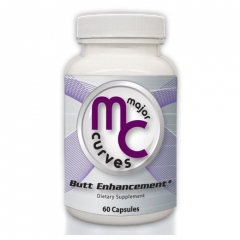
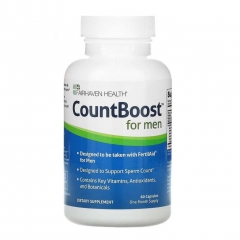
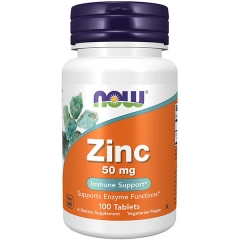
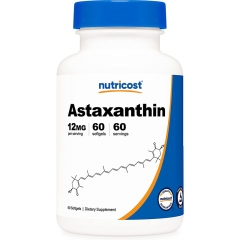
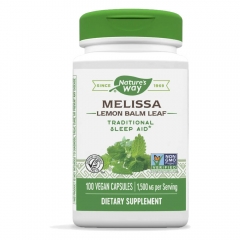
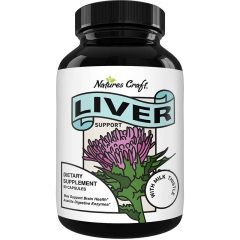
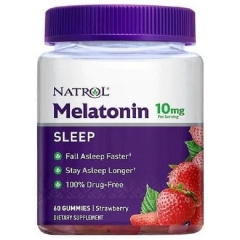
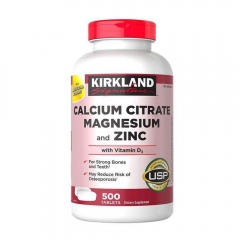

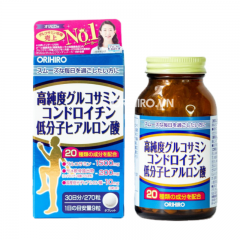
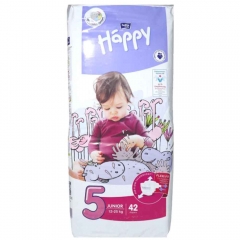
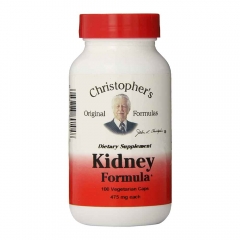

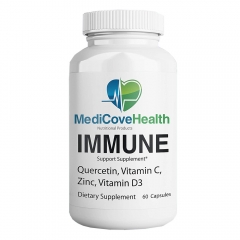




 KHUYẾN MÃI LỚN
KHUYẾN MÃI LỚN Hỗ Trợ Xương Khớp
Hỗ Trợ Xương Khớp Bổ Não & Tăng cường Trí Nhớ
Bổ Não & Tăng cường Trí Nhớ Bổ Sung Collagen & Làm Đẹp
Bổ Sung Collagen & Làm Đẹp Bổ Thận, Mát Gan & Giải Độc
Bổ Thận, Mát Gan & Giải Độc Chăm Sóc Sức khỏe Nam Giới
Chăm Sóc Sức khỏe Nam Giới Chăm Sóc Sức khỏe Nữ Giới
Chăm Sóc Sức khỏe Nữ Giới Chăm sóc Sức khỏe Trẻ Em
Chăm sóc Sức khỏe Trẻ Em Thực Phẩm Giảm Cân, Ăn Kiêng
Thực Phẩm Giảm Cân, Ăn Kiêng Bổ Sung Vitamin & Khoáng Chất
Bổ Sung Vitamin & Khoáng Chất Bổ Tim Mạch, Huyết Áp & Mỡ Máu
Bổ Tim Mạch, Huyết Áp & Mỡ Máu Bổ Mắt & Tăng cường Thị lực
Bổ Mắt & Tăng cường Thị lực Điều Trị Tai Mũi Họng
Điều Trị Tai Mũi Họng Sức Khỏe Hệ Tiêu hóa
Sức Khỏe Hệ Tiêu hóa Chăm Sóc Răng Miệng
Chăm Sóc Răng Miệng Chống Oxy Hóa & Tảo Biển.
Chống Oxy Hóa & Tảo Biển.